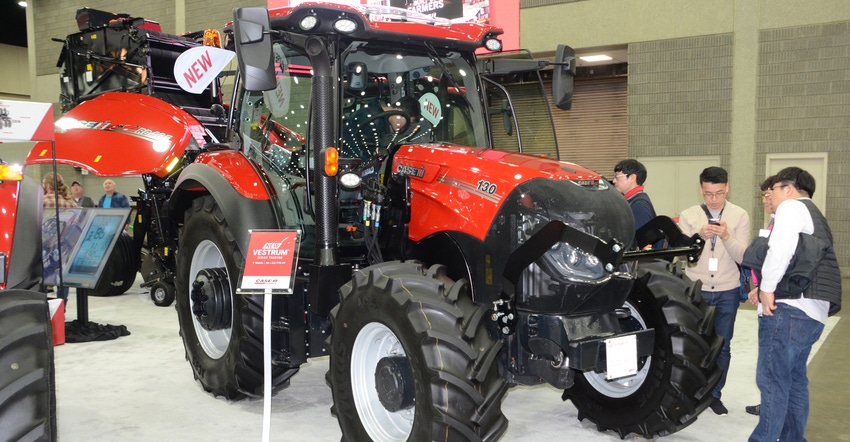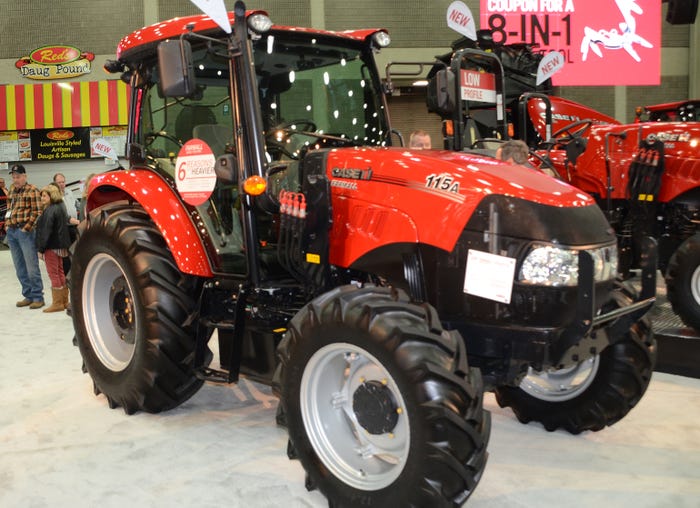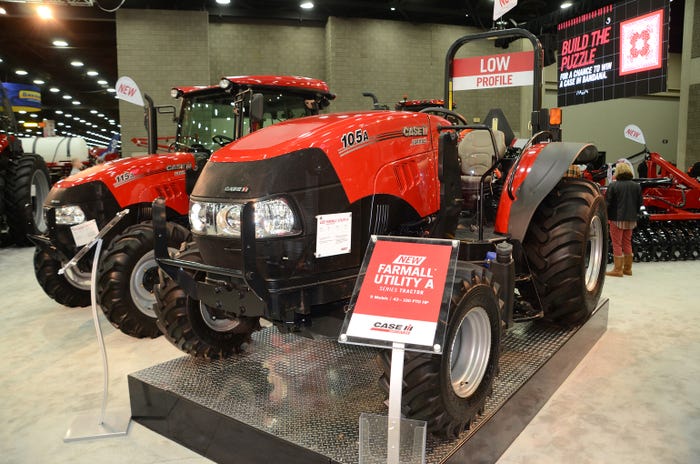March 2, 2020

Greg Lucey was excited. The Case IH Farmall tractors marketing manager had plenty to talk about during the National Farm Machinery Show. First, there’s news of three new Farmall models, including an innovative low-profile design that a range of buyers – including poultry houses – may find valuable. And he’s helping launch the Vestrum line, which aims to hit a specific market segment with some key high-end features.
 A LONGER LINE: The Farmall A line gets three new models, taking the count to nine as Case IH adds the 95A, 105A and 115A models. There's even a low-profile version.
A LONGER LINE: The Farmall A line gets three new models, taking the count to nine as Case IH adds the 95A, 105A and 115A models. There's even a low-profile version.

3 new Farmall machines
Lucey points out that there are now nine models in the revamped Farmall A line. The latest three fill in the higher-end horsepower gap the line faced. “The three new models fill gaps in this line,” he says. “We’ve added the 95A, 105A and 115A that provide a full line of economically based machines.”
He explains that to keep things simple with this line, there’s only one transmission choice – a 12-by-12 power shuttle. The body styles available include two-wheel drive and mechanical front drive, and they're available in open-station and cab models.
There's a bonus too, with the Farmall A low profile model. More on that later.
Models and choices
The new models, in cab trim, feature a flat-deck design. For the open-station models, there’s a short 2-inch straddle. The new machines can also be outfitted with a loader, and “about 80% of these models will go out with a loader,” Lucey says. That cab model also features a high-visibility roof panel as standard.
The L575 loader is pre-fit for the machines, and they come outfitted with loader hookups from the factory, which saves the dealer setup time. “This is a styled loader that works with this family of tractors,” Lucey says.
Attachment options for the loader include the skid-steer plate option, or the Euro-style for a range of attachments. The loader has a live third control and includes a soft-ride design.
Power comes from a 3.4-liter, four-cylinder FPT engine. “This is a durable engine that requires no diesel particulate filter,” Lucey observes.
He notes that many part-time farmer tractor buyers don’t understand the DPF, and they’re surprised that there’s no DPF with this machine line. This can save time or worry with regeneration issues, especially for users who don’t spend a lot of time on their tractors.
 STAYING LOW: Launched at the National Farm Machinery Show, this low-profile version of the Farmall A has some “poultry-friendly” features other users will enjoy as well. It really is shorter than the 115A to the left.
STAYING LOW: Launched at the National Farm Machinery Show, this low-profile version of the Farmall A has some “poultry-friendly” features other users will enjoy as well. It really is shorter than the 115A to the left.

Low-profile features
Lucey lamented that the low-profile tractor had been put on a pedestal, joking that it’s difficult to see how low the machine stands. The machine has the same power as its other Farmall A siblings (the 105A is shown), but is designed to go into low-ceilinged poultry houses, or work through orchards and vineyards.
Two key features for those markets include the ability to reverse the engine fan manually, and the exhaust design that is below the machine and pushes exhaust to the back. “The reversing fan means the user doesn’t have to keep brushing stuff out of the grill after going through a building. That’s valuable for a poultry producer,” Lucey says. “And the exhaust design, unlike others that go to the side, blows exhaust behind the rider. That’s a cleaner ride.”
The sweet spot
There’s a market segment with opportunity, and Case IH is stepping in. The new Vestrum Series is a premium compact tractor that provides high-horsepower performance combined with maneuverability and premium cab comfort. The shorter-wheelbase design positions the machine right below Maxxum in the lineup, offering producers a choice.
Lucey notes that there was little choice in the 100-hp tractor class with the level of versatility and features.
He explains that the Farmall U offers similar horsepower but is a much lighter-featured machine. With the Vestrum, the operator can get a premium cab – in fact, it is the Maxxum cab – on the shorter-wheelbase platform that many farmers like.
There are two models in the line – the Vestrum 100 and Vestrum 130. The machines come with a 28.5-gpm hydraulic pump flow rate, which is the highest for this horsepower class on the market. The machines also feature a 6,700-pound lift capacity, and they have enough power to perform a range of tasks – from planting to baling.
The market for a shorter-wheelbase, tighter-turning tractor is of interest. Most manufacturers moved away from this class with other models, but Lucey explains this new platform fills a growing need in the market.
There are two transmission options for the line – the CVXDrive continuously variable transmission and the ActiveDrive 8 dual clutch transmission. Vestrum is the first machine in this class to have these two transmission options. CVXDrive automatically selects the most efficient gear ratio and engine speed to provide the most efficient performance. ActiveDrive 8 offers a wide range of working speeds without torque interruptions.
The new machines are also Advanced Farming System-compatible and work with ISOBUS packages. The in-cab AFS Pro-700 display allows you to adjust most tractor features including gear setting, general operation and setup displays. There’s even an optional suspended cab for this model.
Learn more about the Farmall A and Vestrum at caseih.com.
About the Author(s)
You May Also Like






